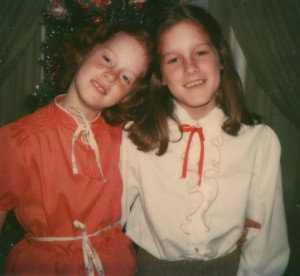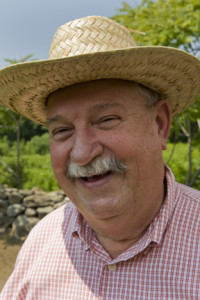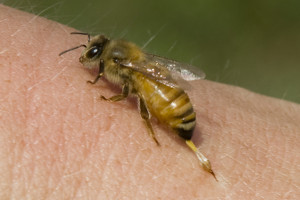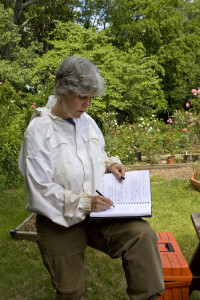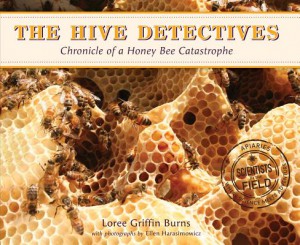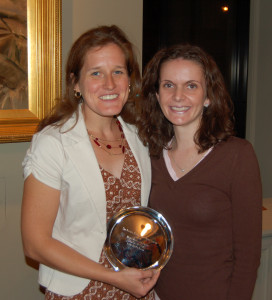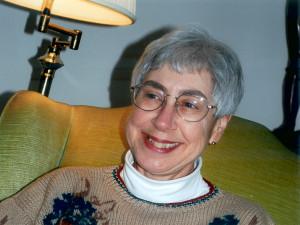 Photo courtesy of Ellen Harasimowicz
Photo courtesy of Ellen Harasimowicz
I knew early on that I would need to hire a photographer to work with me on THE HIVE DETECTIVES– this was a fresh story, and it needed fresh photographs–so I was crushed to find out that my friend Betty Jenewin, a photojournalist and one of the photographers behind the images in TRACKING TRASH, wasn’t available for the job. And I was leery when Betty told me that she knew another photographer, also a photojournalist, who might be available, not because I didn’t trust Betty’s judgment, but because I was setting out very soon for a research trip across the mid-Atlantic states. Whoever I hired would have to be game for traveling on short notice, bunking with me throughout the trip, and traipsing through commercial honey bee yards and research apiaries in search of images and stories. It seemed like a lot to ask.
And it would have been, for most people. But Ellen Harasimowicz is not most people. We met for the first time on March 25, and three weeks later we set off, the trunk of my car full-up with her camera equipment, my recording supplies, and two sparkly new bee suits. That’s how Ellen rolls. As soon as we hit Pennsylvania, the two of us taped our pant legs closed with duct tape, donned those bee suits, and marched into an apiary that was home to millions of honey bees; we visited a quarantined bee yard and sampled the honey left in its empty supers (realizing only afterward that whatever it was that scared off the bees might just be in the honey we ate!); and we volunteered to carry three boxes of honey bees from one bee lab to another … even before knowing for sure if our cargo of bees would be dead or alive (they were dead). It was a blast of a week, full of stories and insights and adventures. We returned to Massachusetts with great material for the book and, more importantly, a true friendship.
In nearly every review of THE HIVE DETECTIVES to date, special mention has been made of Ellen’s pictures. In case you missed them, here’s a sampling:
“Harasimowicz’s clear, beautifully reproduced photographs support and extend the text.” (Kirkus reviews)
“Fully illustrated with excellent color photos …” (Booklist, Starred review)
“… gloriously crisp photographs of bees and people at work out in the field and inside scientific laboratories.” (The Horn Book)
I am lucky to have found Ellen (thank you, thank you, thank you, Betty Jenewin!) and am grateful for her talent and flexibility. She and I have done some pretty amazing things since that first trek together: we’ve stung ourselves with honey bees, we’ve ridden horses to the top of a mountain in central Mexico to see colonies of monarch butterflies*; and we’ve lived on a Costa Rican butterfly farm with giant bats, garrulous howler monkeys, and poisonous snakes.** We’ve spent long hours considering photographs and book structures and new adventures. At this point we have more book ideas than we have time to make them, and I, for one, hope it is always this way.
Thank you for everything, Ellen. Here’s to all the books (and bookish adventures) ahead of us!
* Pictures from this trip will appear in our citizen science book, coming from Henry Holt in January 2011.
** And pictures from this trip are right now enticing an editor to sign the book we call SPECIAL DELIVERY. Or so we hope. Stay tuned!


